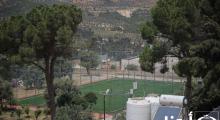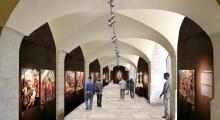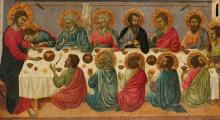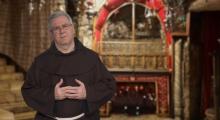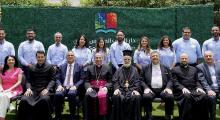Issued by the Catholic Center for Studies and Media - Jordan. Editor-in-chief Fr. Rif'at Bader - موقع أبونا abouna.org
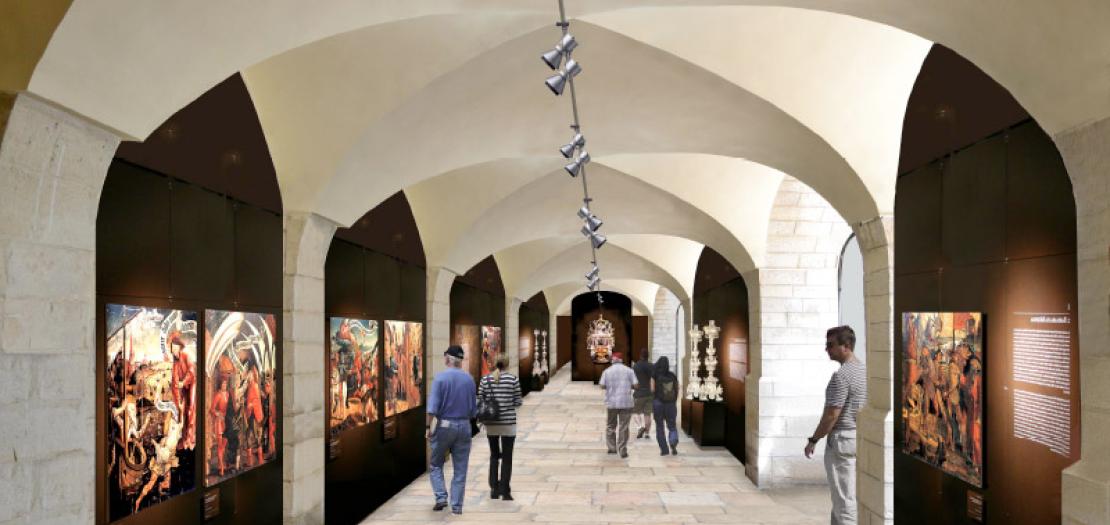
On Monday, May 12, the Curia of the Saint Savior Convent in Jerusalem hosted the event "On the way to opening 2028". A significant milestone in the development of the Terra Sancta Museum, the event marked the completion of the first phase of structural works. Welcoming the guests—diplomats and delegations from various European countries—were Fr. Francesco Patton, Custos of the Holy Land, Fr. Ibrahim Faltas, Custodial Vicar, and Fr. Stephane Milovitch, Director of the Cultural Heritage Office of the Saint Savior Convent.
Following an introductory presentation addressing the progress of the works, the future design of the museum, and its mission and uniqueness, attendees were invited to visit the construction site that, by 2028 (the projected date), will house the historical section of the Terra Sancta Museum.
A Christian Museum as a Bridge Between Communities
“The Custody intends to create a great museum here at Saint Savior to manifest its epiphany,” said Fr. Stephane. The Franciscan friars have always worked alongside the local community while also serving the Universal Church. This dual mission is the legacy the Terra Sancta Museum aims to preserve and present to the public.
“The museum will have two sections focused on the liturgy of the sanctuaries,” continued Fr. Stephane. “The first will display sacred objects received from European monarchs over the centuries. The second will feature the many offerings made by the local Christian community in collaboration with the Franciscans of the Holy Land.”
In a land marked—now more than ever—by conflicts and divisions, the Terra Sancta Museum is being established with the mission of narrating the bond between Europe and the Holy Land and the coexistence of diverse communities and religions.
“This museum,” concluded Fr. Stephane, “is meant to be a place of Christian culture and, as such, a bridge to other communities. We hope to welcome many Jews, Muslims, Christians, and pilgrims from around the world, who will rediscover their roots in the collections on display here.”
European Nations United in the Holy Land
The significance of Monday's event was further emphasized by the presence of representatives from several European countries. Some are already active supporters of the Terra Sancta Museum, while others came to learn more about its vision and progress. What united them all was a shared goal: to contribute to the preservation and promotion of the European artistic and cultural heritage in the Holy Land.
This was also highlighted by Mirko Tricoli, Head of the Italian Agency for Development Cooperation (AICS) in Jerusalem: “In this context, Italy wishes to convey a clear message: the preservation of cultural and religious heritage—concerning both the Terra Sancta Museum and the Holy Sepulcher—is of inestimable value. It is a commitment not only of political significance, but also a technical one, as it includes the training of professionals who, in the future, will be able to apply these skills.”
Culture: A Privileged Path to Dialogue
For the Custody of the Holy Land, the historical section of the museum is a cultural work that gathers objects of great historical and artistic value. What distinguishes it, however, is its unique mission: to serve as a privileged path for dialogue in the Holy Land.
As the Custos emphasized, “Culture can be a means of dialogue. As Pope Francis has often said—and as Pope Leo XIV reiterated in his first address to the world—it is essential to build bridges in a perspective of peace.”
Through the construction of this museum, the Custody does not aim only to recount the past, but to play an active role in the present and future dynamics of a land often marked by conflict.
“The museum project,” concluded Fr. Francesco Patton, “aims, on one hand, to help people better understand the Custody and its history, and on the other, to assist the peoples and believers who live in this land to find a place where, in the name of culture, they can engage in dialogue and build bridges.”


